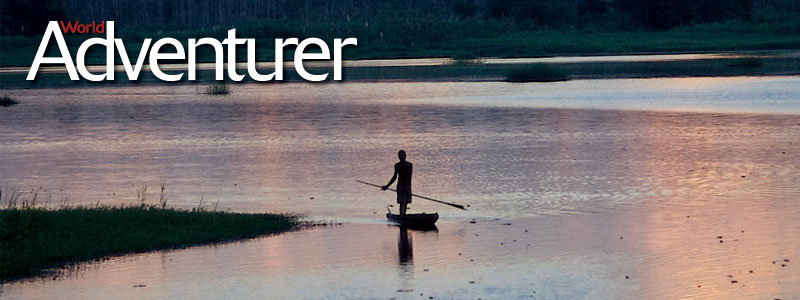Spirit of the Sepik
By John Borthwick
From the shore it must look like a bad case of 'Bwana Vistas'. Six of us are chugging down Papua New Guinea's Sepik River in a dugout canoe - enthroned in wicker easy-chairs.
Not only that, but we're shrouded against an equatorial sun by more headwear than an Arab in mufti. So, we look a tad silly? - it allows us to spend three days slipping back through time on this glittering river, without kneeling all day as sun-crisped cripples.
The Sepik is one of the largest rivers in the world in terms of water flow; starting its 1120 kilometre journey in PNG's central mountains, it travels in a long western loop into and out of Irian Jaya before meandering east to the sea below Wewak.
Brown and broad, it picks its way across the plains, changing course at will, leaving a maze of dead-ends, ox-bow lakes, swamps and lagoons. No place to be a lone wanderer, unless you have month of Sundays, a bucket of kina and a PhD in mazes.
In Korogo village we visit a 50-metre long, two-storied haus tamburan whose upper floor is given over entirely to the works of local carvers. In this adumbral "big house" gallery, huge faces, figurines, totems, penis sheaths, birds and ubiquitous puk puks (crocodiles) throng the gloom. Giant masks extend their tongues in proto-Kiss grimaces. The prices start at around 15 kina (approximately AUD$15) for works that we will later see in Australian boutiques with a 10 times mark-up. The fertility carvings are striking. Though the exaggerated genitals and occasional copulatory postures might be viewed by wowsers as "proto-porn", within the Sepik belief system of sympathetic magic, these creations are simply life, its origins and evocation.
In one big house we see, but cannot photograph, the "orator's chair". Alois explains that during a major dispute, such as over land or sorcery, antagonists can be required to sit in this magical chair, which, according to belief, permits only the truth to be told by its occupant. A liar is soon reduced to a sweating, trembling mess.
Water hyacinth-clotted lakes, stilt villages, kids paddling by on slender, crocodile-prowed dugouts, levitating herons, sago makers, canoe builders, village crocodile pens ... the Sepik's gallery of images is endless. We divert from the river and slide through a channel into the lush Chambri Lakes where we put ashore at the village of Aibom, noted for its bonfire-baked pottery.
The distinctive grinning faces on the decorated Aibom pots prove irresistable to half our group. When these join the proliferation of masks and carved stools we have already gathered, our canoe looks like a floating garage sale.
